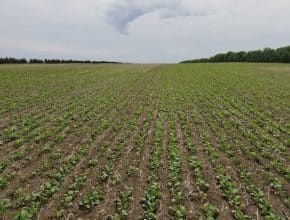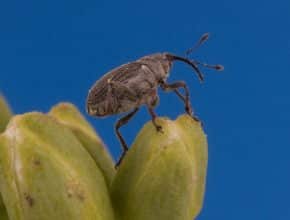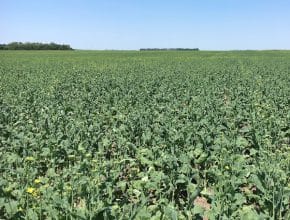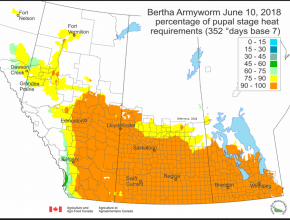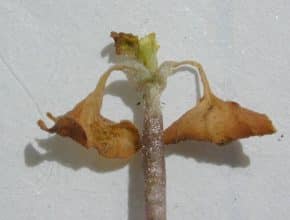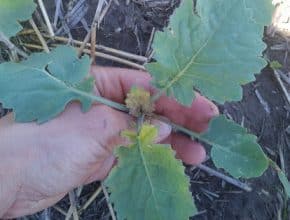Home / Canola Watch / Page 106
-
By Ian Epp Plants are fully emerged, making it a great time to take a look at canola plant stand and decide if you’re feeling satisfied or disappointed. The first……
-
Thin stands often require a lot more babysitting. Scout early, scout often and keep good notes…
-
Earliest canola fields are just coming into flower in southern Alberta and southwest Saskatchewan, the highest-risk areas for cabbage seedpod weevil in Western Canada. Cabbage seedpod weevils tend to cluster in fields that are first to flower, so farmers with early fields will want to check them closely…
-
As earliest canola crops start to flower, the annual sclerotinia stem rot management conversations begin. This article describes factors that increase risk and reduce risk…
-
How many plants recovered? Are they at early stages and at risk of heavy blackleg infection? What is the crop nutrition situation?…
-
Growing degree days across most of the Prairies have reached the threshold for adult bertha armyworm (moth) emergence from overwintering pupae. That is 7-10 days ahead of normal. Egg laying begins shortly after adult emergence and young worms emerge about a week after that. Based on 2017 results, 2018 is not expected to be a bad year, but local flare-ups…
-
This quick quiz has three images showing pretty distinct symptoms. What caused them?…
-
A field has a large number of young canola plants that look limp, pale, chewed-up, knocked around, lifeless and sad. How can you tell if a dead-looking plant still has life? Look at the growing point. Is it green?…
-
Injury from herbicide residue in the soil can only occur in fields with a history of Group 2, 4, 5 and 14 herbicide applications. While soil characteristics and dry conditions can extend the at-risk period for these herbicides, carryover issues often occur when required recropping intervals are not followed. For example, Roundup Ready or Liberty Link canola cannot be seeded…

